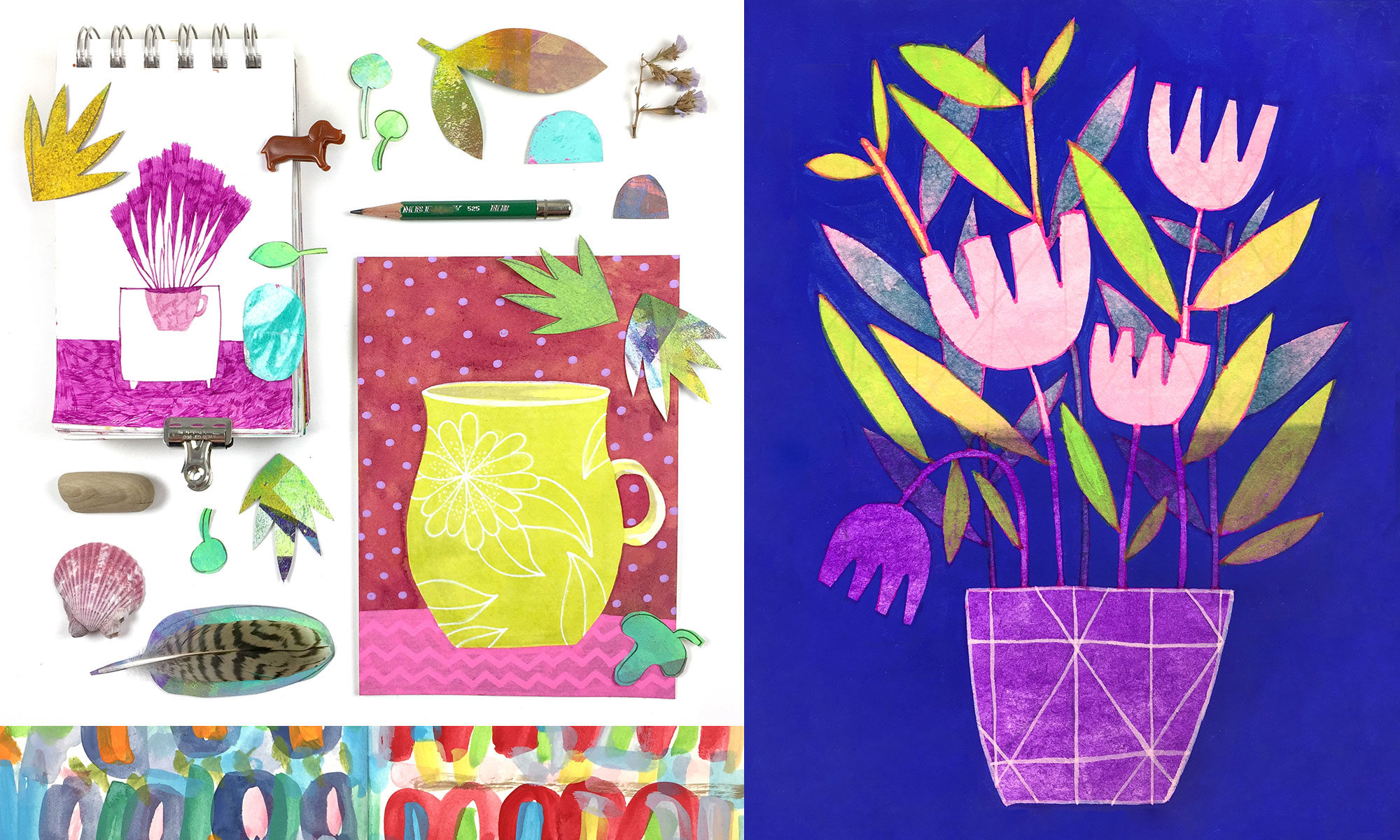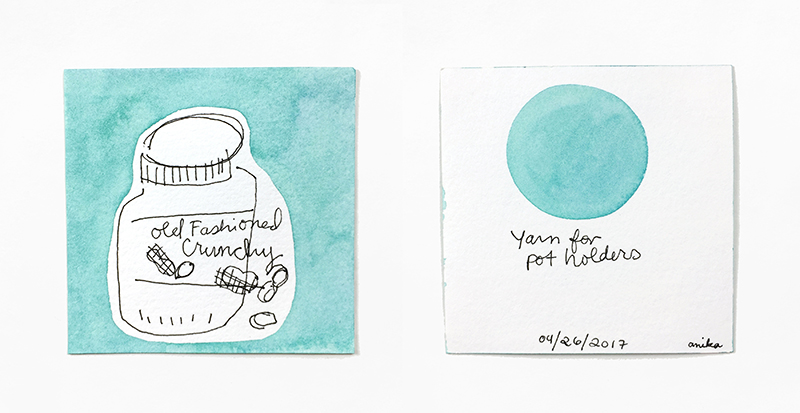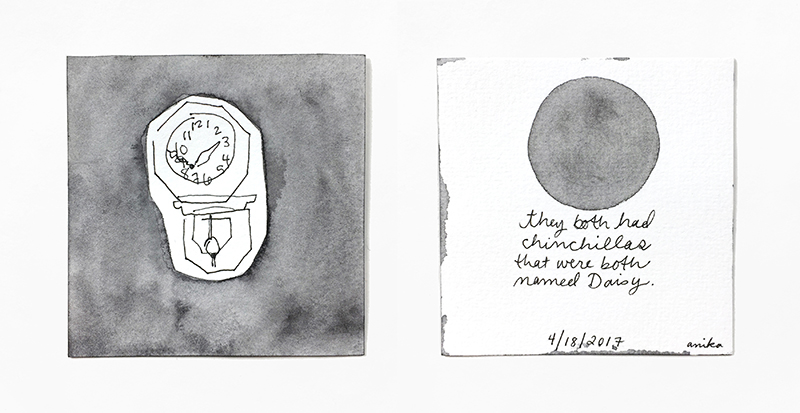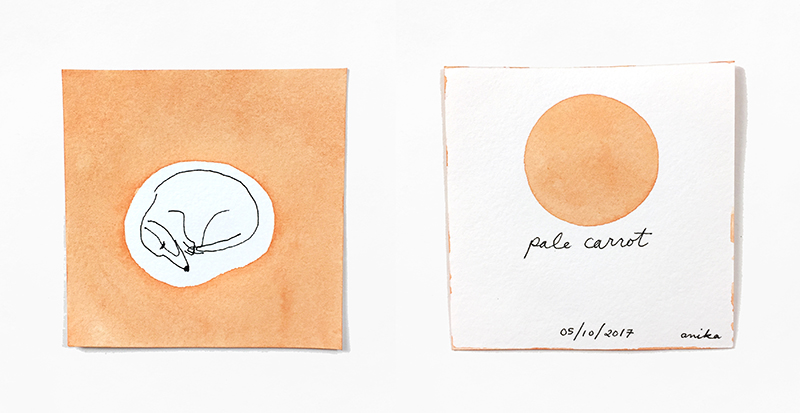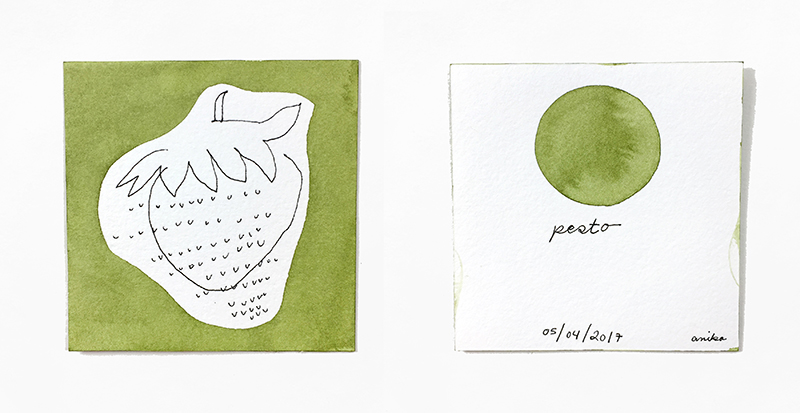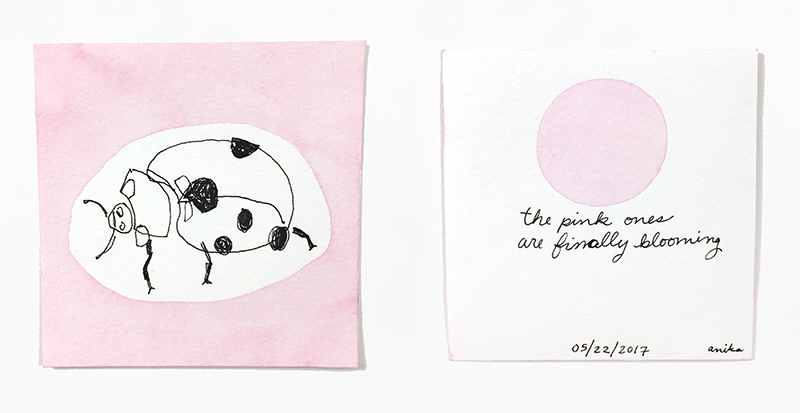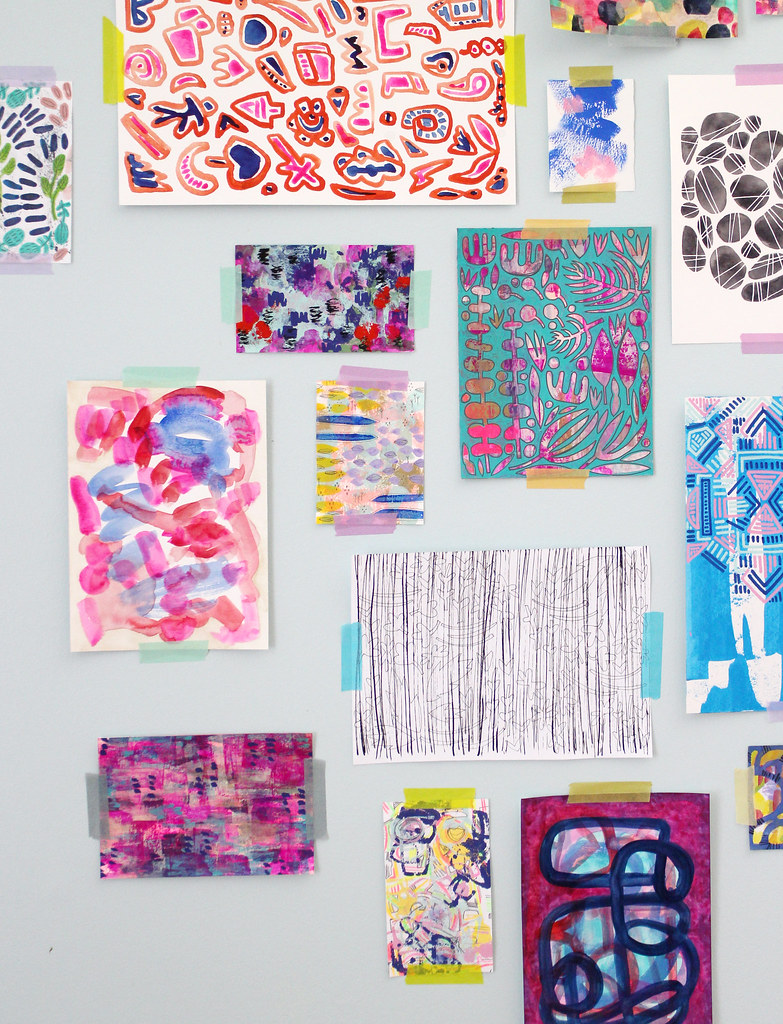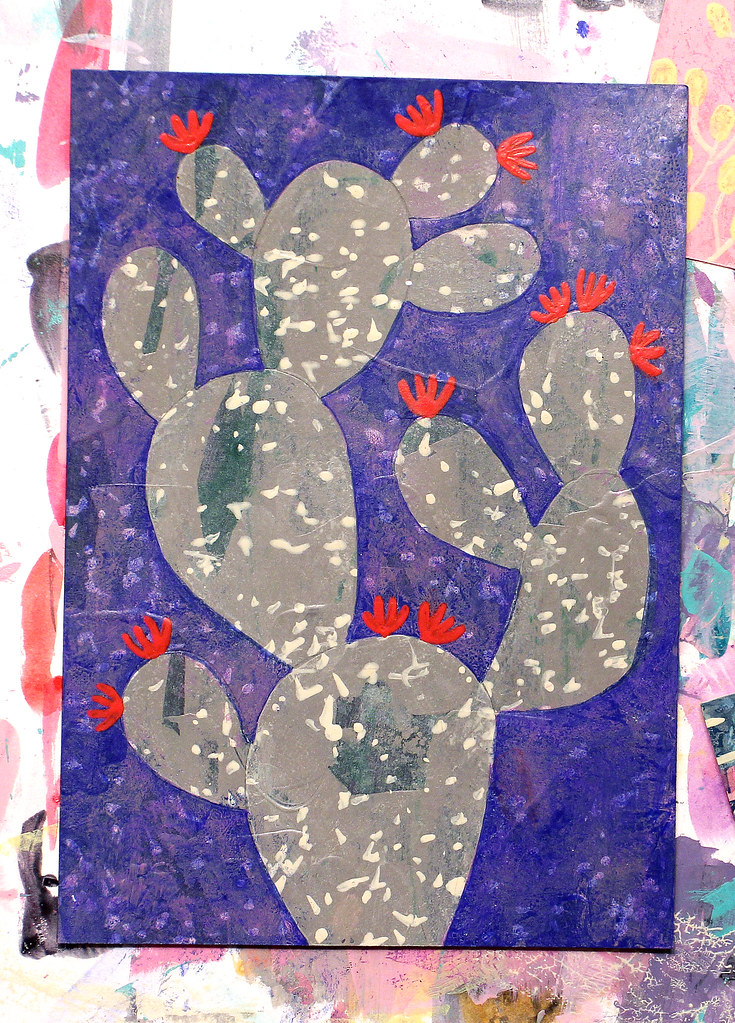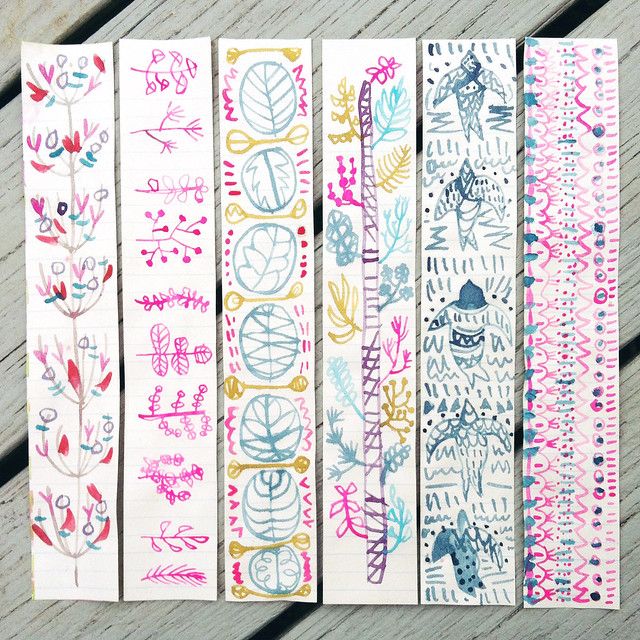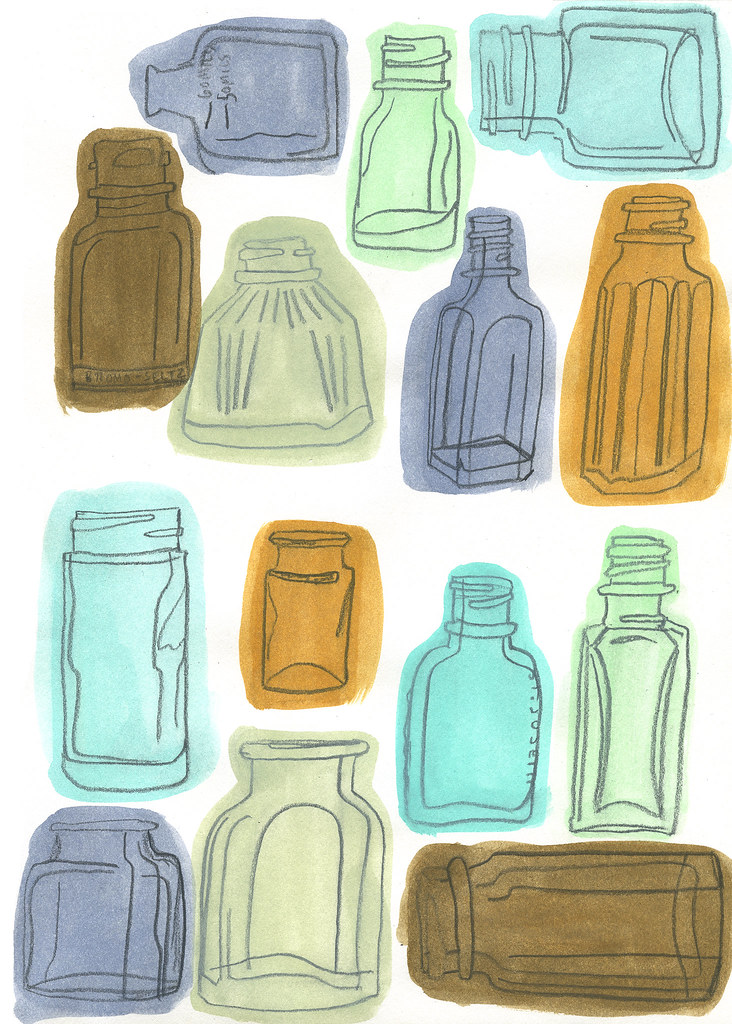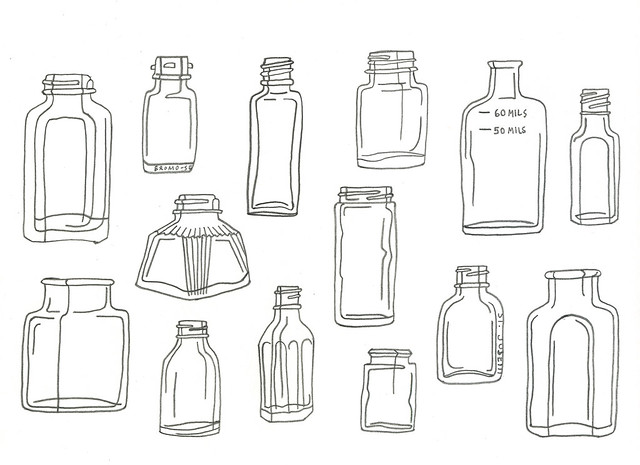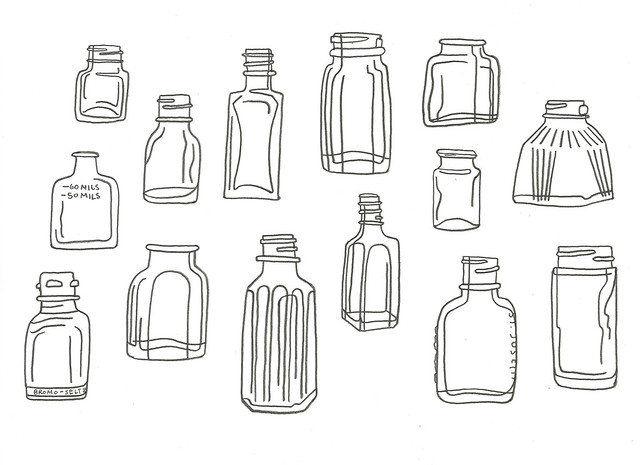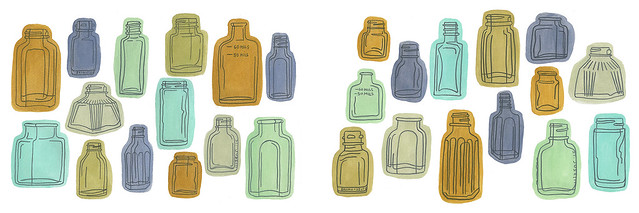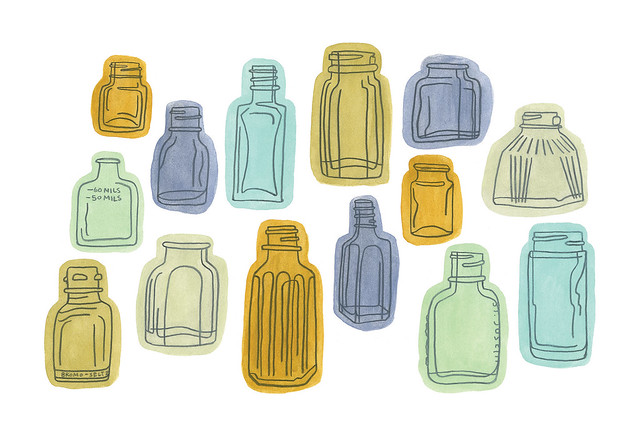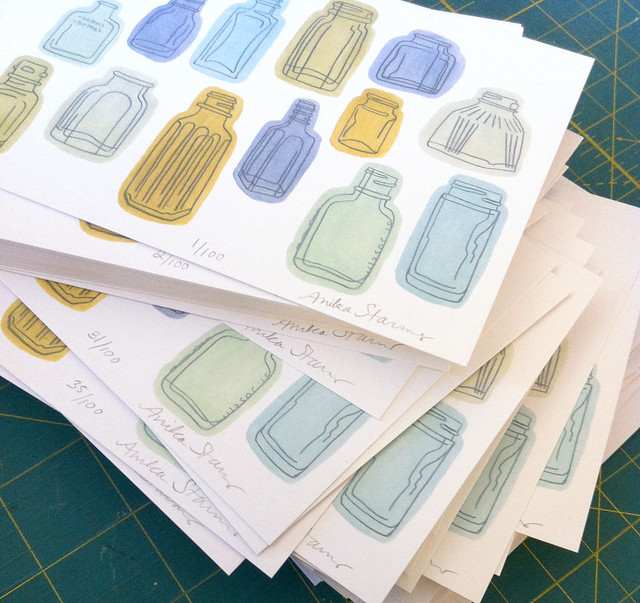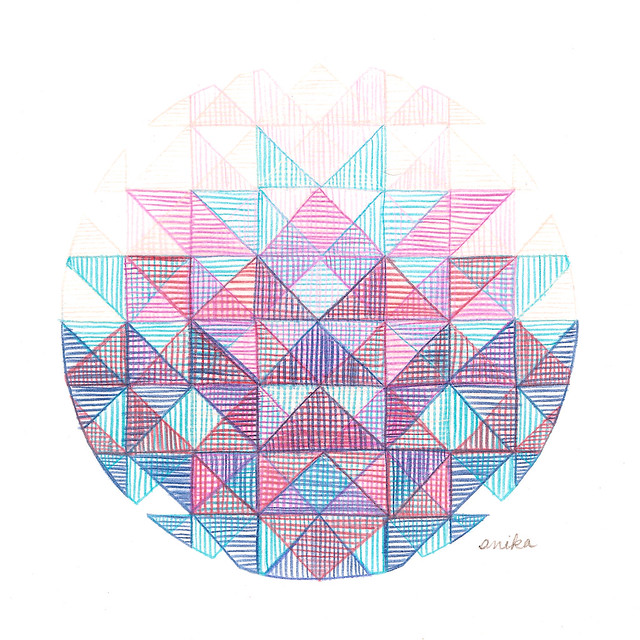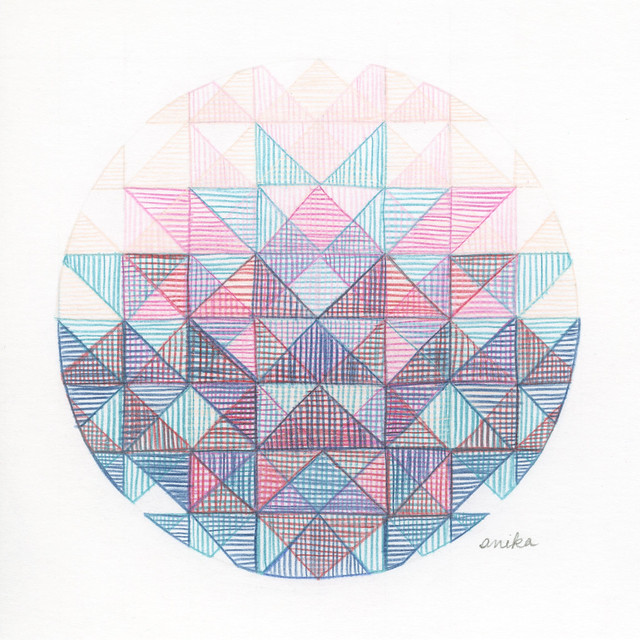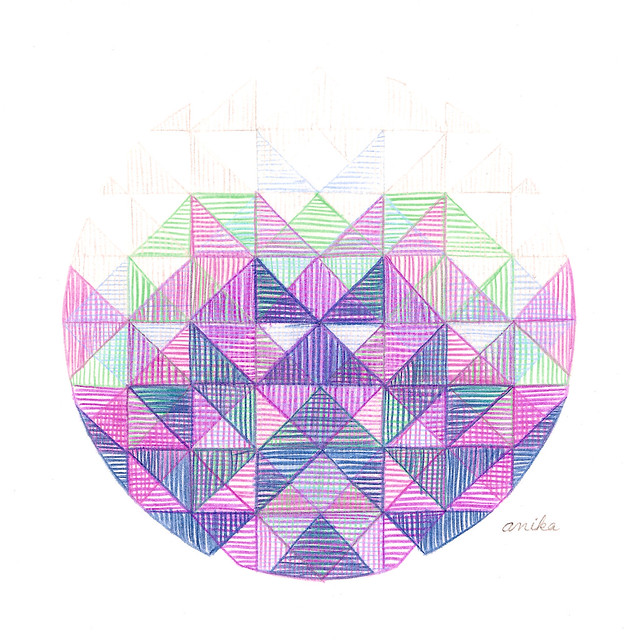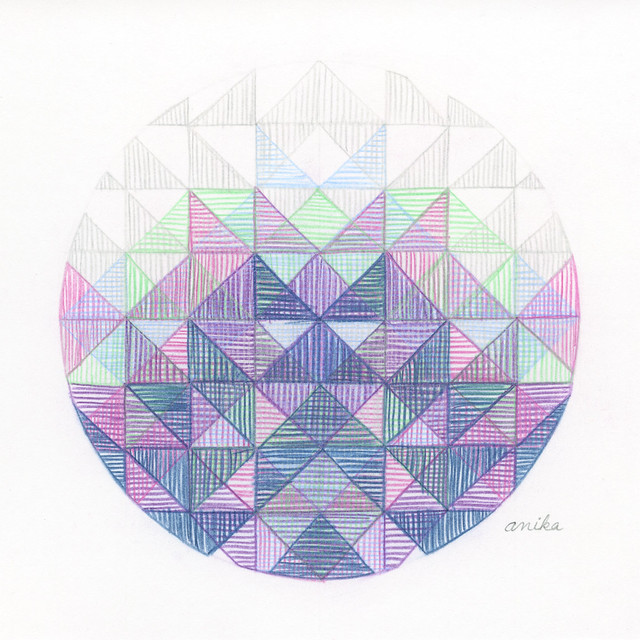It’s already day 2 of the #PatternJanuary challenge! I’m having so much fun seeing what everyone is posting. There’s a great variety of styles and subject matter already! If you’re just learning about this challenge, please feel free to join in at any time. You can catch up if you want to, but you don’t have to!
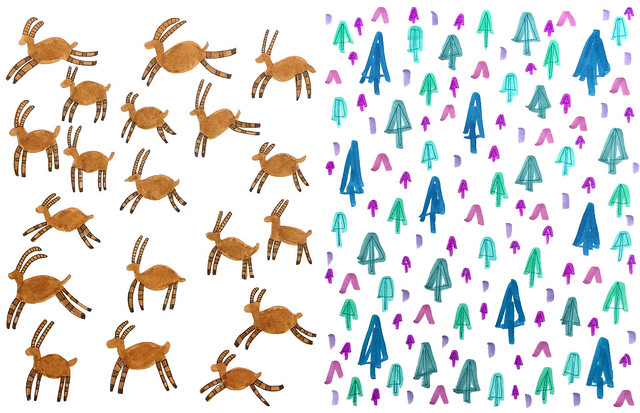
Day 1 – Happy (left) and Day 2 – Forest (right)
A couple people voiced concern about being able to keep up with the challenge everyday. First of all, let me say that there is NO PRESSURE from me if you join Pattern January and don’t finish. I will consider it a great success if you post one pattern, or even if the challenge inspires you to do something different on your own!
If you’re still feeling a little uneasy, and not sure if a daily challenge is possible for you, check out the following tips to help you get into the right mindset to prepare for success in any creative ongoing challenge. (If you’re already feeling confident and ready to go, then by all means go for it and do your thang!)
1. Decide What You Have Time For
When I created daily patterns in 2013, I adjusted the challenge each month to a different medium, and my choice always depended on what I had time for. If I was traveling, I put together a simple travel kit that wouldn’t take up much space. When I was home and had a light work load, I had time for more in depth pursuits such as trying a new medium, or improving skills.
Look at your schedule for the month ahead and think about what you realistically have time for. If you have family visiting every weekend and big deadlines at work, it might be a good month to work in a small sketchbook with just a brush pen or two.
We all have especially busy months, but don’t automatically take the easy route! If your schedule is on the lighter side, that might be the time to commit to something more involved. In either case, carving out some creative time can be so rewarding–make it a priority.
2. Create Space
Before you get going on your challenge, set up a creative space in your life. It took me a while, but I discovered that it’s a lot easier to start creating every day when I’m not surrounded by teetering piles of paper and supplies.
Choose a physical area where you will work on the daily prompt. Take some time to clean up if need be, and set up your space in your studio, dining room table or even by the tv! Gather the supplies you want to work with and have everything ready to go ahead of time.
Also think about the space of time when you want start creating. If you can work on your daily challenge at around the same time everyday, that consistency will help you to achieve your goal. You could go as far as penciling it in your agenda or setting a reminder on your phone. And if you’re pressed for time during the month, set yourself a time limit!
Another way to think about creative space is the area you’ll be covering with your beautiful art. Depending on what medium you choose to work with, a 9″ x 12″ sketchbook can be a huge time commitment. Think about whether a smaller size, maybe 6″ x 8″ or even 3″ x 5″ would be more doable.
3. Keep It Simple
I started my first month of daily patterns in September 2012 with a set of 5 colored gel pens and a small handmade notebook. The materials were so easy and familiar, I enjoyed every minute of it! In November 2012 I continued with copic and prismacolor markers which were my go-to supplies for years before that. The familiarity of those simple tools made it so much easier to show up every day. After I got into the routine of creating, trying a new medium didn’t seem like such a hurdle, and by January 2013, I was eager to try carving stamps, which I’d never done before!
If the idea of working with a new medium is intimidating, Keep it simple and go with what you know. If you have a favorite brush pen, or if you’re crazy about watercolor, use those familiar tools to help you through the month.
4. Make the Challenge Your Own
(Take my advice! Or don’t!)
I’ve enjoyed several daily challenges hosted by others. The Doodle a Day Challenge by Rhianna Wurman and the Index Card a Day project (ICAD) by Tammy Garcia from Daisy Yellow Art come to mind. I was most successful when I set up my own parameters. I decided to forgo the optional prompts during ICAD, but had fun covering the cards with marker doodles and sharing it with the lively group. When I joined the Doodle a Day Challenge, I combined it with my own daily pattern project, using the prompts as a jumping off point.
Is there a way you can combine a challenge like Pattern January with something you are already learning or want to get better at? Do you want to draw patterns, but you’re not loving the prompts? Try instead to focus on a particular medium or type of pattern to explore for the month.
Feel free to adjust the challenge as needed! Even if you decide a particular challenge isn’t right for you, but it inspired you to come up with your own unique goals, that is also awesome!
5. Feeling Pressure? Adjust!
I’ve done a few challenges here and there where I got overwhelmed and quietly gave up. If I’d given myself permission to adjust as I went along instead of chucking the whole idea, who knows what I could have created?!
If you start a challenge and you get part way through and realize you’ve taken on too much, you are allowed to change the rules! If painting takes too long, switch it up to something faster like markers or color pencils. If posting every day is stressing you out, post every other day, or post a weekly recap. If creating every day is overwhelming, let yourself create every other day, or only during the week, or just on weekends. Go easy on yourself when you need to, and you’ll find that establishing a regular creative habit will be easy too!
6. Final Thoughts
Although it might seem like my tips have devolved into convincing you to do as little as possible, that is not my point, I promise! I want to get the idea across to you that you can make any creative challenge work for you, and I encourage you to do so! There are so many details that you can customize ahead of time, and then change along the way before you get to the point of calling it quits. I have to tell you, it feels amazing when you complete a creative goal (even a modified one!), so I highly recommend you make up your mind to create consistently on whatever level you choose!
Are you planning a creative challenge this year, either daily, weekly, or monthly? I’d love to know about it (whether you’re doing Pattern January with me or not!). If you have any tips for success in an ongoing creative commitment, please share your ideas as well! Thanks for stopping by!
